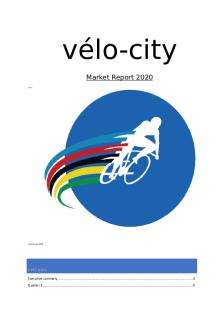Bubbles and Crash Simulation Report PDF

| Title | Bubbles and Crash Simulation Report |
|---|---|
| Author | Abiodun Ayodele Babalola |
| Course | Corporate Finance |
| Institution | Indiana University - Purdue University Indianapolis |
| Pages | 2 |
| File Size | 110.4 KB |
| File Type | |
| Total Downloads | 68 |
| Total Views | 213 |
Summary
F553 – Asset Pricing and Financing of FirmBubble and Crash SimulationBubbles occur when the price of a stock is over-valued which cause the price of the stock to rise for a short period of time after which the price drops causing a crash in the value of the asset. The efficient market theory (EMT) i...
Description
F553 – Asset Pricing and Financing of Firm Bubble and Crash Simulation
Bubbles occur when the price of a stock is over-valued which cause the price of the stock to rise for a short period of time after which the price drops causing a crash in the value of the asset. The efficient market theory (EMT) in financial economics is a market where the price of an asset represents the unbiased estimate of the asset value. The price of an asset does not always have to represent the true value of the asset, the errors in value must be unbiased and the random. From the simulation, it could be seen that the value of the stock was overpriced at the beginning of the simulation. Prices of the stock started around $30 and the redemption value of the stock was $7. Since the starting value was higher than the redemption value by $21, the asset was undervalued, and there was profit opportunities. My strategy was to sell the stock at the highest price as soon as possible. During that time also, I invested in lower priced stocks and sold them when high. Since I was in Asset Market – Group 1, buying asset at low price and selling at high was not so profitable as the assets were on the verge of bubble and crash. At the end of game1 simulation, I ended up with $514.72. In Asset Market – Group 2, the randomness (error) in the price of the asset was so high. The asset was priced below $10 in the first few round and there were so many price points below $7. This type of market encouraged investors to buy the asset at lower prices, hold to redeem the asset at higher price. Thereby benefiting both dividend prospects and redemption price of $7. Group 2 had more available profit opportunities and exploited that.
With this simulation, I was able to learn that the true value of the asset should be lower than $7 because towards the end of the rounds, the prices of the asset were below $7 and investors had no other option but to hold on to the asset in order to get the $7 redemption value. The mistake I made was not buying the asset when the price was below $7....
Similar Free PDFs

Simulation report
- 9 Pages

Simulation report
- 15 Pages

Dot.com bubbles - summary
- 6 Pages

Plaxis 2D Simulation Report
- 13 Pages

Final Report for Simulation
- 13 Pages

Bike Simulation Report (mkt
- 10 Pages

Crash
- 12 Pages

1 Ansys Fluent Simulation Report
- 9 Pages

report on simulation business game
- 13 Pages
Popular Institutions
- Tinajero National High School - Annex
- Politeknik Caltex Riau
- Yokohama City University
- SGT University
- University of Al-Qadisiyah
- Divine Word College of Vigan
- Techniek College Rotterdam
- Universidade de Santiago
- Universiti Teknologi MARA Cawangan Johor Kampus Pasir Gudang
- Poltekkes Kemenkes Yogyakarta
- Baguio City National High School
- Colegio san marcos
- preparatoria uno
- Centro de Bachillerato Tecnológico Industrial y de Servicios No. 107
- Dalian Maritime University
- Quang Trung Secondary School
- Colegio Tecnológico en Informática
- Corporación Regional de Educación Superior
- Grupo CEDVA
- Dar Al Uloom University
- Centro de Estudios Preuniversitarios de la Universidad Nacional de Ingeniería
- 上智大学
- Aakash International School, Nuna Majara
- San Felipe Neri Catholic School
- Kang Chiao International School - New Taipei City
- Misamis Occidental National High School
- Institución Educativa Escuela Normal Juan Ladrilleros
- Kolehiyo ng Pantukan
- Batanes State College
- Instituto Continental
- Sekolah Menengah Kejuruan Kesehatan Kaltara (Tarakan)
- Colegio de La Inmaculada Concepcion - Cebu






